Kobe > Kyoto

Two weeks down, one week (more or less) to go.
We headed downstairs to the Viking breakfast just after eight, bright-eyed, bushy tailed, and in need of substantial nutrition to carry us through a walking-oriented day. And, if the range of goodies on offer didn’t match what we’d encountered at our previous Viking breakfast back at the start of the sojourn, the quality was, we thought, better.
From there it was a matter of a hike to Sannomiya and an hour-long train journey to the outskirts of Kyoto (Hankyu Arashiyama station, to be precise) where we placed the baggage in a convenient coin locker, wandered over the river through the cherry-blossoms and caught a bus up into the hills, with a basic plan of walking back downhill from Toriimoto.
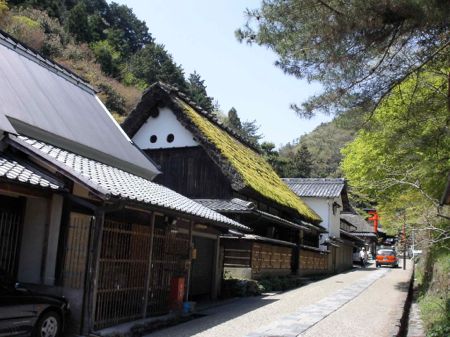
The first part of the walk took us along a traditional Japanese street lined with old houses, before we stopped in at Kyoto Municipal Preservation Museum of Saga Toriimoto's Streets and Structures, an impressive title for an impressive little establishment.
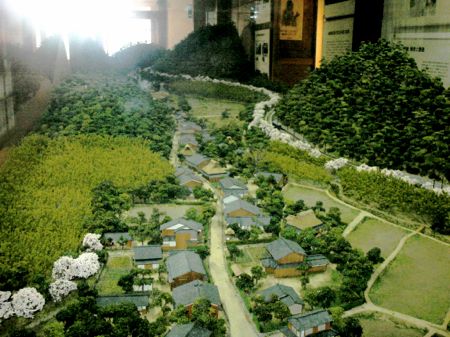
While the museum is set up as a reconstruction of a Meiji-period town house, featuring photographs and a model of the area in the early twentieth century, we got the most benefit out of talking to the attendant, who pointed out a number of tiny details that we wouldn’t otherwise have noticed.
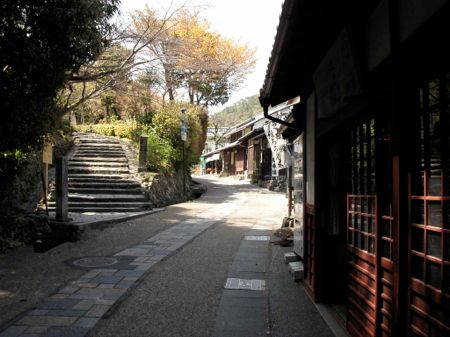
Toriimoto is regarded as particularly spectacular in autumn, and, with the tree-covered hills surrounding the area, it would certainly be a fantastic spectacle, but we were there in spring, and, unless they’d been pointed out to us, would probably have walked straight past the tiny and delicate maple flowers if they had not been brought to our attention.
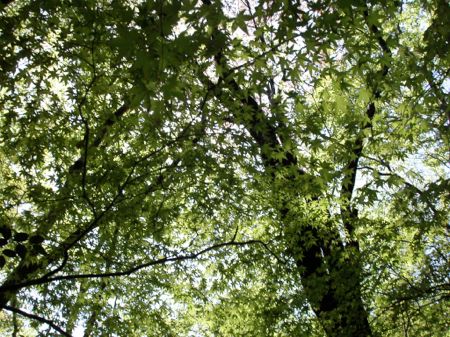
We eventually found ourselves at Gioji Temple, where we wandered through the garden, marvelling at the translucent beauty of the newly formed leaves as the morning sun filtered through the canopy over our heads, the sort of scene you just don’t experience in areas where all the trees are evergreens. The effect was utterly magical, and, again I was fascinated by the mosses which covered the ground under the trees.
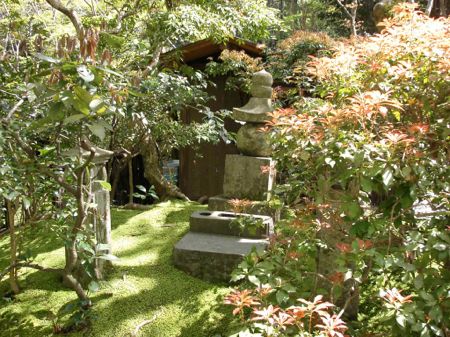
The sight was almost enough to make me want to sell up and relocate to some new location where the temperature and rainfall patterns would encourage the development of moss in the garden
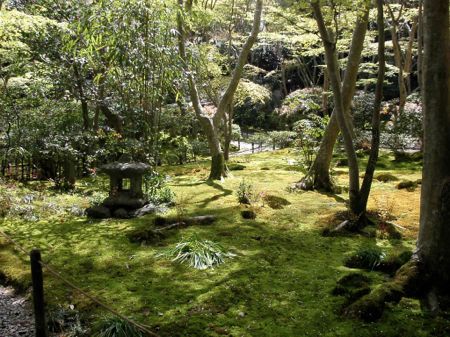
From Gioji we continued onwards to Nisonin Temple, which dates back to the first half of the ninth century though the main hall was reconstructed in 1521 after being destroyed by fire, and from there strolled along the bamboo path.
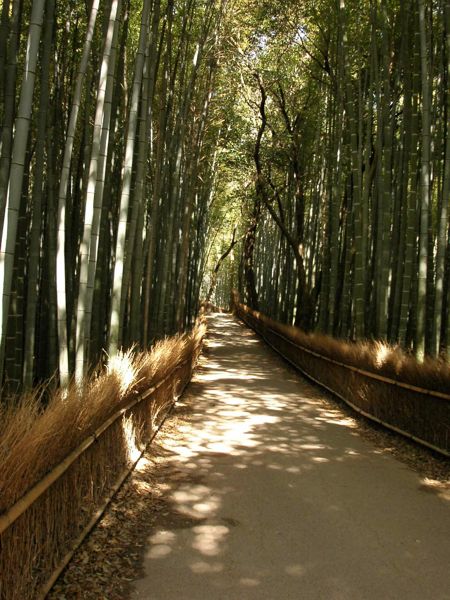
Our final stop for the day’s temple tour was Tenryuji, a World Heritage site dating back to 1339. Most of the buildings on the site are, however, much more recent (Meiji-era) due to the destruction associated with internal conflicts over the years.
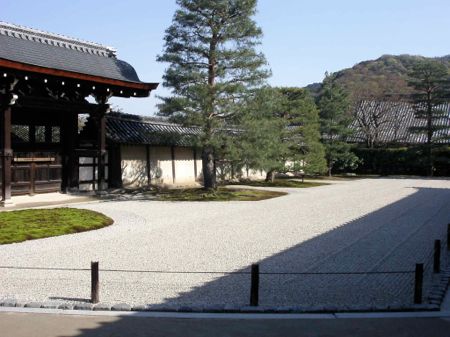
Fire may have destroyed the buildings several times over, but the landscape garden, supposed to be one of the oldest of its kind, dates back to the temple’s founding abbot, who designed the layout.
We took our time walking around the garden, stopping for a rest at the bamboo grove near the North Entrance, and strolling back through the cherry-blossom.
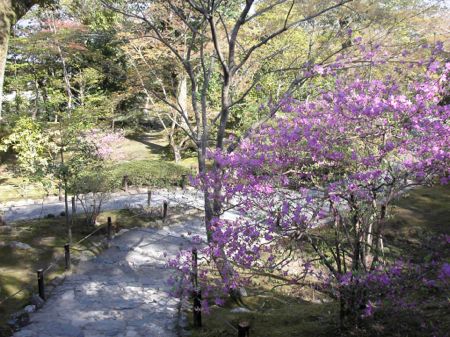
By this stage, however, we were reasonably templed-out so it was a case of back to the station, retrieve the luggage and it was Ho! for the night’s accommodation, which turned out to be an economy double room with an economy-sized bathtub to match.
Right at the time when a lengthy soak in a warm bath would have been wonderfully restorative.
And it was, I felt, of the utmost importance to rest up before the evening’s festivities which would see us catching up with The Sponge and Lighting Dude, two members of a theatre troupe that had passed through Bowen about eighteen months ago doing an Arts Council gig around the district’s schools on their way to the Pacific Edge arts conference in Mackay.
We’d already caught up with The Interpreter in Tokyo, and prior experience suggested that the evening would develop into a rather fluid affair.
A flurry of e-mails established the basic plan for the night’s entertainment. Meet at Karasuma Station and then head towards somewhere to eat, and, what is more important, drink. The Sponge is, as the nickname suggests, partial to a drink.
And so, of course, am I.
Once at the station, we caught up with two familiar faces and a third member of the troupe who’d been enlisted for the night because she was (a) a good drinker and (b) knew her way around the value-for-money eating and drinking establishments in downtown Kyoto.
We stood around chatting for a while waiting for the final member of the party to arrive, and, once she had, set off on a route march which turned to the left and headed down into a basement just as I was about to ask why we’d set off on such a lengthy excursion without a compass and a cut lunch.
We removed the shoes and placed them in a handy locker before we were ushered into an alcove where we set about the important task of organising copious quantities of food and drink. Beer seemed to be the logical starting beverage, and there was some discussion (in Japanese) about the most appropriately-sized drinking vessels.
The Sponge, having spent a busy day on the promotional trail, was not in a mood to drink out of a tooth glass, and uttered something that sounded like Dynamo and which I heard as Dynamite - and I decided nothing less than Dynamite would suffice.
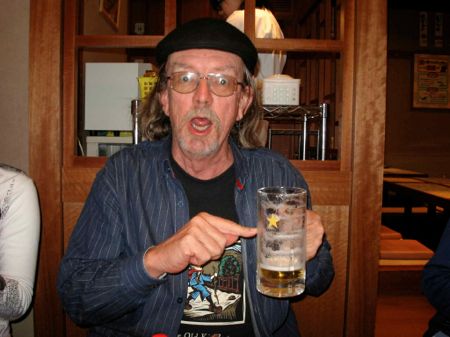
When the first round of drinks arrived, I discovered that Dynamo denoted a drinking vessel containing substantially more than a pint glass.
For the next couple of hours Hughesy and The Sponge washed down another array of assorted dishes, nothing in the high-class-gourmet category, but good solid blotting paper to soak up copious draughts of dynamite before changing to sake.
Along the way we discovered that Lighting Dude needed a change of nickname, due to an aversion to flying. He was, we decided, now to be known as Chicken. It didn’t, however, stop there.
Before much more time had elapsed we learnt he was also one of the very few people in Japan who doesn’t own a mobile phone.
In fact there are probably only two people in the whole of the country who don’t possess one of the ubiquitous devices and they both, it seems, work in the administrative section of a certain children’s theatre company.
Which explains why he is now known as Double Chicken.
As Hughesy and the Sponge continued demolishing the dynamite the third member of the troupe kept up before deciding beer lacked sufficient “oomph” and switched to Shōchū, earning the title of Double Sponge, a title she accepted as a suitable honorific given her capacity for strong drink.
She also expressed a desire to visit Australia with a view to demolishing large quantities of steak.

And, later in the evening I was prompted to switch to sake, remembering The Sponge is somewhat of an expert on the stuff, with a particular interest in the smaller regional independent producers. On our next visit, it was decided, Hughesy is to be taken for an intensive sake-appreciation course under the guidance of our resident expert.

It was some time after ten-thirty when we paid the bill (a very reasonable 1500-yen per head to cover food and drink for six people, including three very thirsty ones) and set off for the station to see the others off on their way home before wandering back to the hotel feeling no pain whatsoever.

